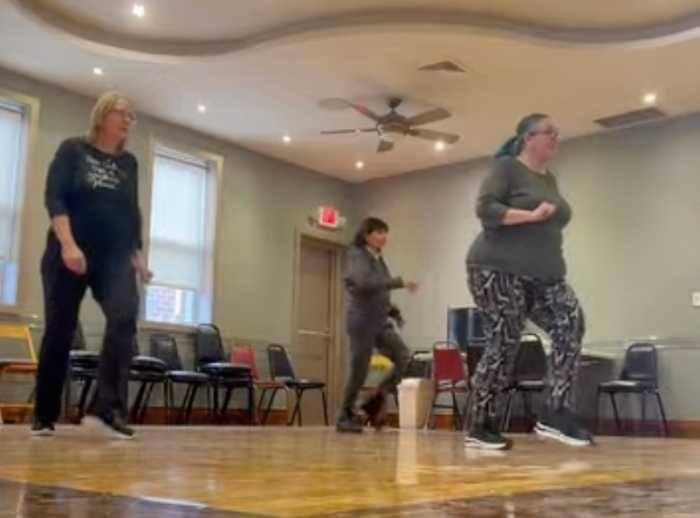Some days it seems like we’re constantly playing catch-up with our schedules, trying to get our work done, while staying on top of bills, and unexpected life challenges, while trying to be there for everyone, from our families to our jobs. In the midst of this, it can be hard to recognize if the feeling of overwhelm is starting to feel like the norm every day, and notice the warning signs of when it’s time to stop, take a breath, and find balance before overwhelm starts to drift toward a regular state of anxiety and depression, or worse.

September is Suicide Prevention Month, marking an ideal time to break the stigma by speaking about it, providing tools, resources and education on how to help ourselves and others. The most important thing to remember is that suicide is preventable, and it’s vital to notice the signs in ourselves and others before reaching the point of crisis.
Dr.Nandini Collins, the CEO of Solace House in Long Island City, works every day to break the stigma through seminars, events and primarily through crisis outreach with their free and anonymous hotline for those who need someone to talk to, as well as those who have been bereaved by the loss of a family member or friend from suicide.

Most recently, the nonprofit organization held the Sunset Boat Cruise on Sept. 18, one of their biggest fundraisers they have every year, to help them continue to provide free support to those in need in New York. Collins has been able to provide her expertise in not only recognizing warning signs in others if they are depressed or suicidal, but tips and tools for everyday use to help others recognize when they need to speak out to help prevent reaching a crisis point. In addition to breaking the stigma of speaking out, changing the way we speak about suicide is important as well.
“The first point is educating the public that language matters,” said Collins. “We use ‘died by suicide’ instead of ‘committed suicide.’ Committed is linked historically to crimes and sins, and using it for suicide adds to the stigma, it adds to the shame and blame. Families are already carrying so much deep grief, and that language can make it feel heavier. When we say “died by suicide,” we are recognizing suicide as a health outcome, and it acknowledges that the person was suffering from a mental health condition and that their death was the result of that illness, and not some type of moral failing.”
While many experts tend to offer advice on noticing warning signs in others, it’s just as important to notice our own warning signs that tell us we need help, so we can know what to do next instead of pushing our feelings down and ignoring them.
“People should get familiar with what their personal red flags are that tell them they’re heading into a crisis,” said Collins. “For example, sometimes when you feel overwhelmed with work or family or anything, it can feel very isolating, and you can sometimes acknowledge, ‘Wow, I’m feeling pretty lonely.’ Some people increase their drinking or substance use. It’s about understanding your own internal and personal red flags before you head into that crisis mode.”
But just as important as knowing our own red flags is creating a personal safety plan, which can be vital in preventing a crisis and helping us manage overwhelm and difficult situations by having healthy go-to outlets and understanding how we’re feeling.

“This is all part of developing a safety plan; everybody needs internal coping strategies, and not everybody reaches out for help,” said Collins. “Some people that I’ve spoken to, sometimes the safety plan can start with going for a walk, just changing the environment, listening to music, or writing in a journal. A lot of people like to color or do puzzles, whatever the internal coping strategy is, as long as it’s not a destructive one.”
For those who are still learning how to reach out to someone else for help, these tools are also important as our society continues to learn how to speak more openly, particularly across cultures where mental health discussions are considered taboo.
“It offers another place to turn, because there is that stigma and it’s so deeply seated in cultures,” said Collins. “In my culture, you don’t talk about mental health; it’s taboo, you just ignore it. Men don’t talk about it, and it’s outrageous that the statistics of men who die by suicide are so high, because they’re not supposed to talk about it historically, and that’s my main drive. I want to create a shift in this entire paradigm. Talking about it saves lives, and breaking stigma can change people’s lives.”
Still, having at least one person you can talk to, whether it’s a friend or loved one, is important to develop. If you don’t have that in your life right now, it’s okay, and the reason why resources like Solace House or 988 for crisis exist.
“Part of the safety plan is to have that support group,” said Dr. Collins. “Who do you trust? Who can you talk to? A lot of people who come to Solace House for our services say that they don’t have anyone, so they come to us because we have confidential, anonymous support from licensed therapists where they can talk about anything, and that’s why our services are so important. We are kind of the non-crisis [support], but 988 is for those in crisis. Nationwide, anyone can call 988 when they’re in crisis. Suicide is very much preventable, and the one thing I want to emphasize and get across the most is not to keep it inside. If you don’t have support, reach out to an anonymous service like Solace House or 988.”
For those who might be concerned about a friend or a family member who you feel may be depressed or suicidal, there are key signs to look out for. Although they can vary and might not be the same for everyone, it helps to be aware.
“Anybody who is talking about wanting to die or feeling hopeless; sometimes people have increased withdrawal from friends and family, sudden mood changes, or behavior changes can also be a sign that somebody is withdrawing or struggling,” said Collins. “Oftentimes, people give away their belongings, and that’s their way of saying goodbye. If you notice someone is struggling with major life stressors, job loss, grief, relationships, breakups are a big one; any kind of major life stressors can be a warning sign. Sometimes there are no warning signs at all. A person can appear happy, successful, or even at peace on the outside, but they’re quietly struggling on the inside, and that’s why we stress the importance of open conversations about mental health that reduce stigma so people feel safe asking for help or talking about it before they reach that crisis point.”
If you or someone you know is struggling with overwhelm, depression, or thoughts of suicide, you are not alone, and you don’t have to suffer in silence. Reach out to someone you know or speak with a licensed professional at Solace House for free and completely anonymous, confidential help. For more information, go to Solace House’s website and talk to someone today.



































